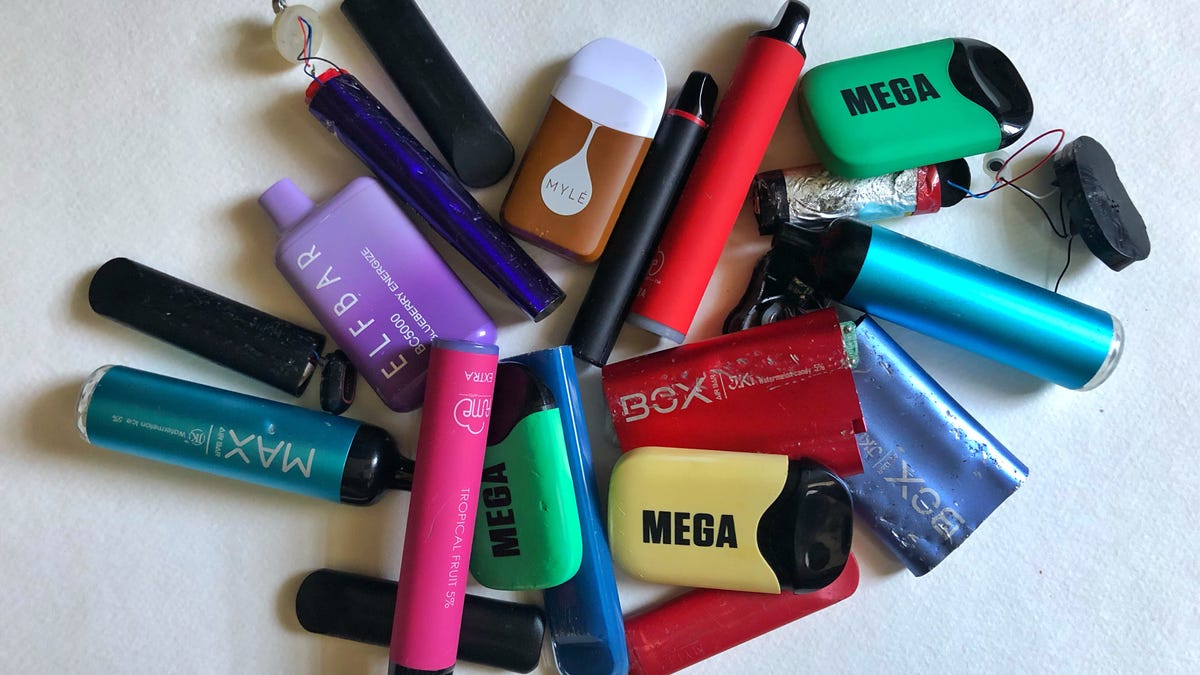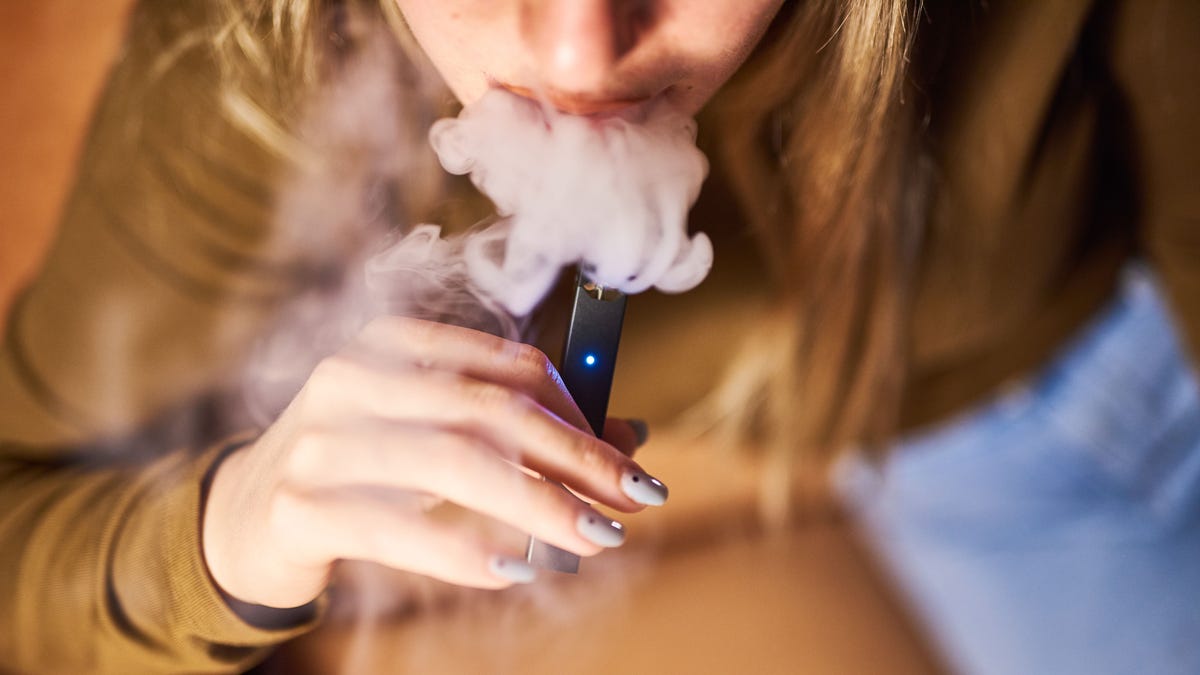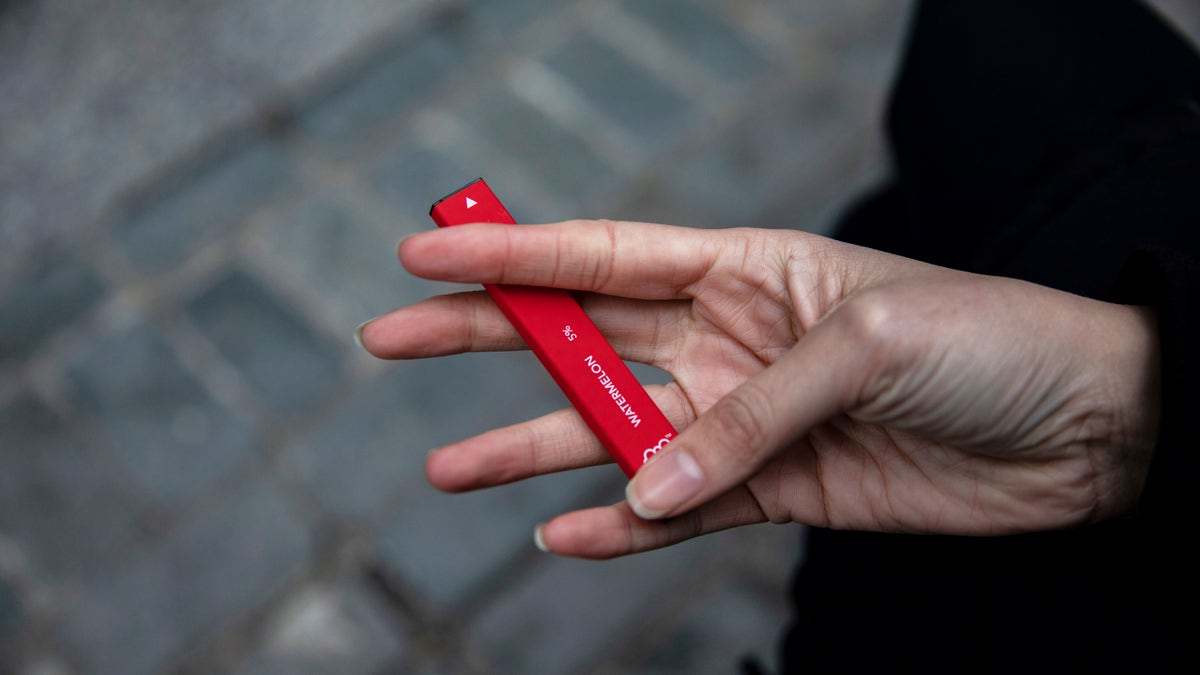Quitting vaping: Expert input for getting off it
Dr. Itai Danovitch, director of psychiatry at Cedars-Sinai Medical Center in L.A., offers advice on how to ditch smoking e-cigarettes.
Vaping is the trendy new hobby that has turned into a concerning habit.
Vaping is just as addictive as cigarettes, according to experts.
That's because the number-one addictive component in e-cigarettes is nicotine.
Dr. Itai Danovitch, director of psychiatry at Cedars-Sinai Hospital, explained in an interview with Fox News Digital that while e-cigarettes and vape products come in all shapes, sizes and flavors, the use of e-cigarettes by adolescents is "really concerning."
DRUG OVERDOSE DEATHS AMONG ADOLESCENTS ON THE RISE
The number of people smoking tobacco products has drastically decreased — yet vaping is on the rise, he added.

These discarded vape pens were found on the streets of New York City. (Lindsey Nicholson/UCG/Universal Images Group via Getty Images)
"Over 20% of high school students have used electronic cigarettes and about 10% of middle school students" have done so as well, he said.
"Kids don't recognize the risks and harms associated with something that appears to them to be very normative and around everywhere, and [such things] have a lot of social value."
Perhaps the most jarring fact is that about 80% of kids who begin smoking before the age of 18 will continue to do so as adults, according to Danovitch.

Dr. Itai Danovitch is director of psychiatry at Cedars-Sinai Medical Center in Los Angeles, California. The use of e-cigarettes by adolescents is "really concerning," he said. (Cedars-Sinai)
Addiction medicine physician and Mayo Clinic Nicotine Dependence Center director Dr. Taylor Hays told Fox News Digital that the adolescent brain, since it's still developing, is more likely to form addiction.
"The long-term addiction is a concern in young people because of the developing brain," he said.
"Then we [would] have another generation of people who are nicotine-dependent and maybe even transition back to smoking."
"The priming that happens in the brain for kids increases the risk that they're going to develop addiction down the line to other substances like alcohol or illicit drugs," Danovitch also said.
POST-PARTUM DEPRESSION AMONG BIRTH MOMS: HOW WOMEN ARE BREAKING THE STIGMA
As the younger generation hops on the vaping bandwagon, Hays said that one of his concerns is the revival of smoking tobacco.
"Would they transition to other nicotine-containing substances like tobacco?" he questioned. "And then we'd have another generation of people who are nicotine-dependent and maybe even transition back to smoking."

Dr. Taylor Hays is director of Mayo Clinic Nicotine Dependence Center. He said quitting such addictive habits as vaping becomes easier over time. (Mayo Clinic)
"Because, believe me, the tobacco industry is not giving up on tobacco."
Both experts agreed that although there isn’t too much knowledge yet about the long-term effects of vaping, anything habit-forming is a red flag.
Danovitch and Hays revealed there’s been a significant increase in concerns about e-cigarette use raised in their practices by parents.
But not all hope is lost: Hays said quitting becomes easier over time until the intention sticks.

A person is shown smoking a Juul Labs Inc. e-cigarette in this photo taken in Brooklyn, in New York City, on Dec. 20, 2018. (Gabby Jones/Bloomberg via Getty Images)
"The truth about all urges is that they become less intense and less frequent over time," he said.
For those looking to kick the habit, here are a few expert tips on how to quit vaping.
1. Set a goal and a quit date
Setting a hard-line outlook for the future is the first step to ditching an addiction.
IF YOU'RE DRINKING MORE ALCOHOL, HERE'S WHAT YOU NEED TO KNOW
Start by setting a date for making the change and finally quitting for good.
Then, set goals for how you want to get there, whether it’s cutting back or quitting cold turkey.
Sharing these goals with others will help keep you accountable for achieving them, so consider reaching out to friends and family about your intentions.
2. Make a plan
Forming a plan for how to quit and make it stick requires thinking about the obstacles ahead.
Danovitch mentioned that some people who vape feel an attachment to the habit due to social pressures; the same goes for other health-related issues such as weight or stress.
"Thinking about the challenges … What exactly do you get out of them?" he asked. "What is going to be difficult for your when you stop?"

A young woman is showing smoking an e-cigarette. People need to break their routines in order to change their habits. (Silas Stein/Picture Alliance via Getty Images)
Addicts should map out how they plan to replace vaping as a dependency and explore options for stress relief and other circumstances.
Hays added, "A plan to quit usually includes changing habits, changing routines."
Hays suggested the breaking of routines during which people feel compelled to vape most; they might change the location of their breaks at the office or avoid going out to bars.
"Routine changes are getting rid of the triggers and cues that are often associated with the use of the substance," he said.
3. Change the mindset
Changing your thoughts about vaping can help break the addiction, Hays explained.
AS FDA BANS JUUL VAPE PRODUCTS FROM US MARKETS, DOCTORS AND CRITICS WEIGH IN
Repeating mantras such as, "It’s not for me," "I’m not a smoker" or "I’m not a vaper any longer" can shift a person's overall mindset.
"You have to change the thought to, ‘OK, I’m quitting,’" he said. "’This is not me. I'm not a vaper any longer. I don't want to be addicted.’"
"Those are the kinds of thoughts that if you use them for just a few seconds, sometimes they will be very effective at helping people distract themselves so that the urge to use dissipates pretty quickly."
4. Try nicotine replacement therapies
There are several options for nicotine replacements, including nicotine patches and gum sold at most drugstores.
"Any adult who is using e-cigarettes or vaping will probably benefit from nicotine replacement therapy," Danovitch said.

Remedies to quit smoking are sold at a Walgreens in Miami Beach, Florida. (Jeffrey Greenberg/Universal Images Group via Getty Images)
For kids, the psychiatrist recommended they should only use nicotine replacement therapies if their addiction has been "well-established."
Regular vape users should try 14-milligram nicotine patches and then taper off after several weeks, Hays recommended.
Judging by success rates with tobacco smokers, the doctor said addicts are twice as likely to ditch the habit for good with effective replacement therapy.
5. Prepare for withdrawals
People who attempt to quit vaping often get caught up in the horrors of withdrawal symptoms.
CANNABIS USERS ARE AT GREATER RISK FOR EMERGENCY AND INPATIENT CARE: STUDY
"That’s why most people relapse," Hays said. "That negative reinforcement from withdrawal really moves them to use again."
"It’s very, very powerful reinforcement," he added.

A man is shown exhaling smoke from an electronic cigarette in Washington, D.C., on Oct. 2, 2018. (EVA HAMBACH/AFP via Getty Images)
The doctor warned that withdrawal symptoms will inevitably occur and that the first two to four days are usually the most difficult.
"That’s when you really need to focus on changing routines, behaviors, thoughts," he said.
Hays proposed trying out other replacements during the withdrawal period, such as nicotine lozenges or regular hard candies.
6. Check out counseling resources
Danovitch noted that there are a "ton" of counseling resources available to help with creating plans, anticipating challenges and "having success with the goal of stopping."
This includes the addiction hotline 1-800-QUIT-NOW, as well as online chat support website LiveHelp.
For kids, Danovitch recommended the website teen.smokefree.gov, which provides "really helpful" guidance on how to quit smoking.

A woman holds a Puff Bar flavored disposable vape device in New York. (AP Photo/Marshall Ritzel, File)
"We don’t want to be dependent on anything," said Danovitch. "Especially something that makes us unhealthy."
As for Hays, his message to all people hooked on vaping is to give kicking the habit a really good try.
"It's going to keep you hooked unless you make a try," he said.
CLICK HERE TO GET THE FOX NEWS APP
"And each time you try, you learn something about what works and what doesn't — and what you need to do to shore up your plan if it didn't work the last time," he said.






















